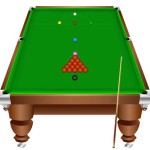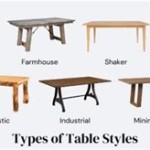Use "the Noguchi Table" from the second mention of this product name
The Enduring Appeal of the Herman Miller Noguchi Table
The Herman Miller Noguchi Table stands as a hallmark of mid-century modern design, seamlessly blending artistic form with functional purpose. Created by the renowned sculptor Isamu Noguchi, this table represents a harmonious fusion of Eastern and Western aesthetics, solidifying its place as a timeless icon in the realm of furniture design. Its simple yet elegant structure, comprised of a sculpted wooden base and a freeform glass top, continues to captivate designers and homeowners alike, making it a sought-after piece for contemporary interiors.
The design was initially created in 1944 and was brought back into production by Herman Miller in 1947. It quickly garnered attention for its striking silhouette and innovative use of materials. The table transcends being merely a piece of furniture; it is a sculptural statement, adding a touch of sophistication and artistic flair to any room. Its design reflects Noguchi's belief that furniture should be both functional and aesthetically pleasing, a philosophy that resonates strongly even today.
The Noguchi Table's enduring popularity stems from its ability to complement a wide range of interior styles, from minimalist and Scandinavian to eclectic and contemporary. Its versatility allows it to seamlessly integrate into various settings, serving as a focal point in living rooms, offices, and even bedrooms. This adaptability, combined with its inherent beauty, ensures that the Noguchi Table remains a relevant and desirable piece for generations to come.
The Design Philosophy and Inspiration Behind the Noguchi Table
Isamu Noguchi's artistic vision heavily influenced the Noguchi Table's distinctive design. Noguchi was a multi-faceted artist, known for his sculptures, landscape designs, and set designs. His exposure to both Japanese and American cultures played a crucial role in shaping his creative approach, resulting in a fusion of Eastern and Western design principles.
The Noguchi Table embodies this synthesis, featuring a minimalist aesthetic reminiscent of Japanese design, combined with a modern sculptural sensibility. Noguchi was greatly inspired by nature and organic forms, and this influence is evident in the freeform glass top and the sculpted wooden base. The combination of these elements mirrors natural forms, creating a sense of harmony and balance within the design.
The concept of negative space was also a significant aspect of Noguchi's design philosophy. The Noguchi Table's design allows for the creation of an interesting visual interplay of positive and negative space, making the glass top appear to float weightlessly above the base. This lightness and transparency provide a sense of openness, enabling it to integrate into a space without overpowering the surrounding decor.
Moreover, Noguchi's belief in the interconnectedness of art and everyday life is clearly expressed in his design. He aimed to create functional objects that were also works of art, transcending the utilitarian purpose of furniture while adding beauty and meaning to the everyday experiences. This commitment to both form and function is what distinguishes the Noguchi Table from other mass-produced furniture pieces of the era.
Material Selection and Construction of the Noguchi Table
The choice of materials plays a crucial role in the Noguchi Table's overall aesthetic and structural integrity. The table typically features a thick, tempered glass top and a solid wood base, commonly crafted from walnut, cherry, or maple. Each material contributes unique qualities to the design, enhancing its visual appeal and durability.
The tempered glass top provides a sense of transparency and lightness, allowing light to filter through and creating a feeling of spaciousness. Its freeform shape, often described as biomorphic, adds a touch of organic beauty and complements the sculpted lines of the base. The thickness of the glass ensures stability and durability, making it suitable for everyday use.
The wooden base, typically comprised of two interlocking pieces, provides a sturdy and sculptural foundation for the glass top. The carefully crafted curves and angles provide both aesthetic appeal and structural support. The wood is often treated with a clear finish to highlight its natural grain and texture, accentuating the warmth and character of the material.
The construction of the Noguchi Table involves meticulous craftsmanship. The wooden base requires precise cutting and shaping to ensure a seamless fit and a visually appealing form. The interlocking design provides inherent stability, eliminating the need for screws or other fasteners. The glass top is carefully placed on the base, creating a stable and balanced surface. This attention to detail contributes to the table's overall quality and longevity.
The material choices and construction techniques employed in the production of the Noguchi Table are designed to ensure that it withstands the test of time. With proper care, the table can remain a cherished piece for generations, becoming an heirloom that continues to enrich the living spaces.
The Noguchi Table's Impact on Design and Culture
The Noguchi Table has had a lasting impact on the world of design and continues to influence contemporary furniture design to this day. It pioneered a new approach to furniture design, emphasizing the harmonious integration of art and function. Its sleek lines and minimalist aesthetic became synonymous with the mid-century modern movement, influencing countless designers and furniture manufacturers.
The Noguchi Table contributed to a shift in design thinking, encouraging designers to move beyond purely utilitarian concerns and embrace a more holistic approach that considers the aesthetic and emotional impact of their creations. The table's success demonstrated that furniture could be more than just functional objects; they could also be works of art capable of inspiring and uplifting the human spirit.
The design has also attained iconic status in popular culture, appearing in numerous films, television shows, and advertisements. Its presence in these media reflects its widespread recognition as a symbol of sophistication and modern elegance. The appearance of this table in various cultural contexts has solidified its place in the collective consciousness, making it a recognizable and desirable object for design enthusiasts worldwide.
The Noguchi Table continues to inspire and influence contemporary designers who appreciate its timeless appeal and innovative design. Its principles of simplicity, organic forms, and harmonious material selection are still relevant in today's design landscape. The Noguchi Table stands as a testament to the power of thoughtful design, demonstrating how a single object can transcend its functional purpose and become a work of art that enriches our lives.
Ultimately, the allure of the table lies in its ability to blend seamlessly into various settings, adding a touch of elegance and sophistication to any space. Its inherent beauty and inherent functionality make it a worthy investment for those who appreciate good design and the value of enduring quality. The sculptural form and thoughtful use of materials ensure that it will remain a timeless classic for years to come.

Noguchi Accent Table Herman Miller

Noguchi Accent Table Herman Miller

Noguchi Accent Table Herman Miller

Noguchi Accent Table Herman Miller

Noguchi Accent Table Herman Miller

Noguchi Accent Table Herman Miller

Noguchi Details Accent Table Herman Miller

Noguchi Accent Table Herman Miller

Noguchi Coffee Table By Herman Miller Hive

Noguchi Table Herman Miller








